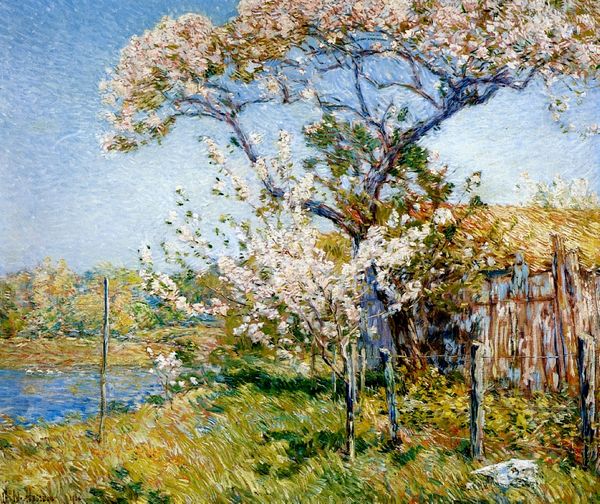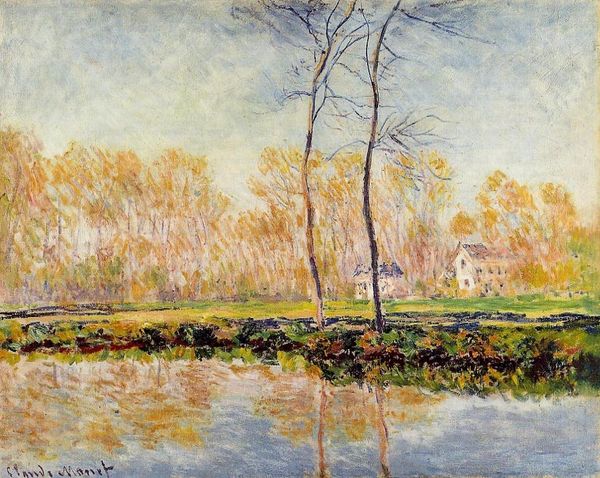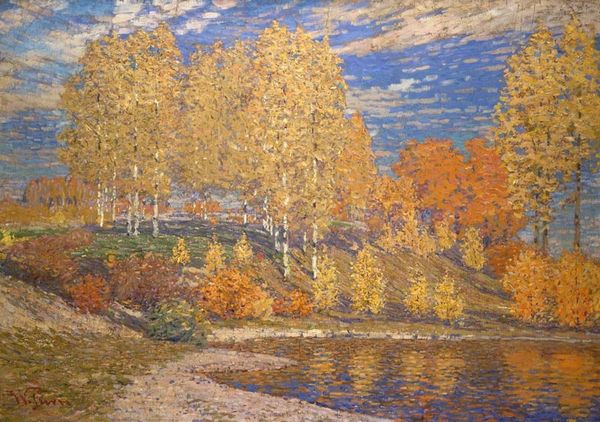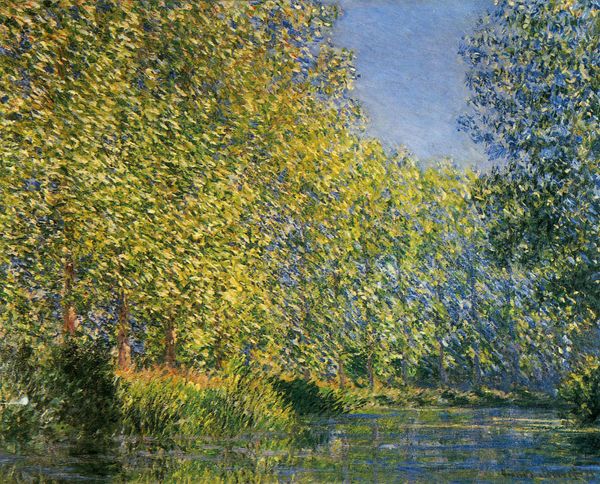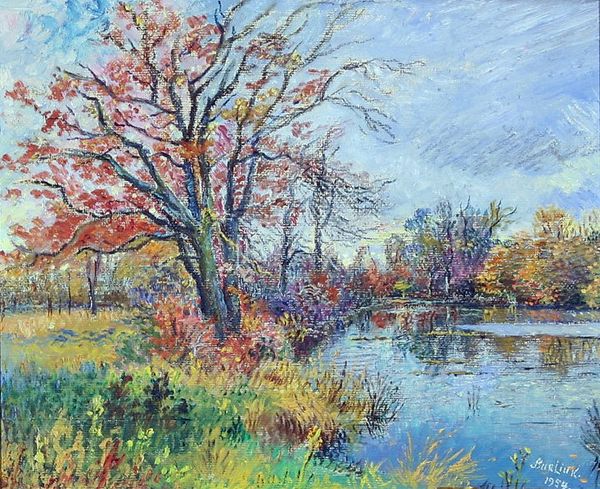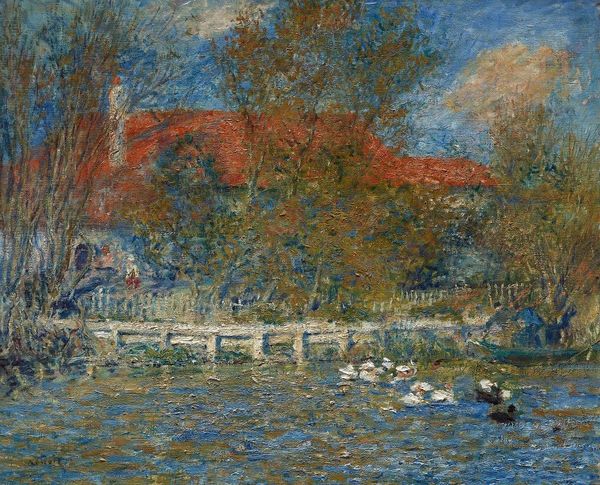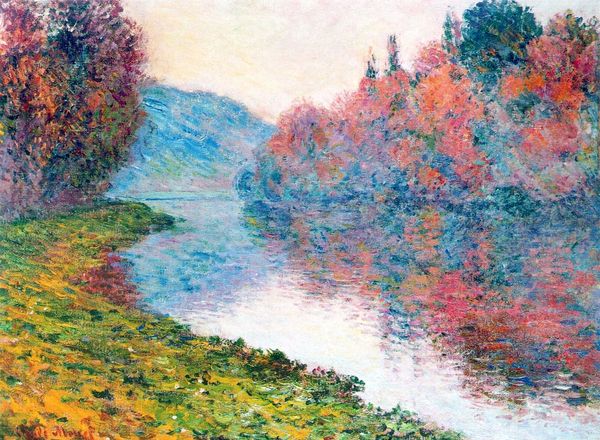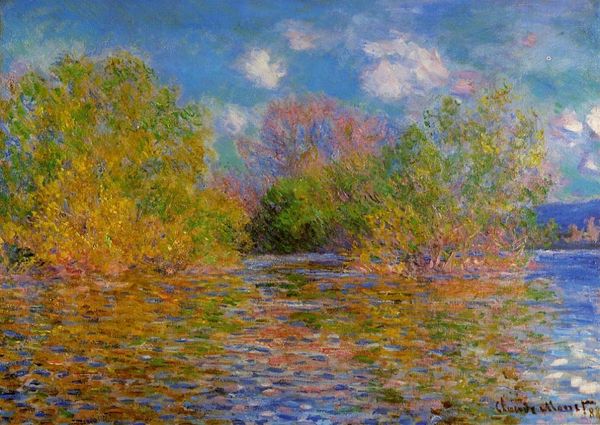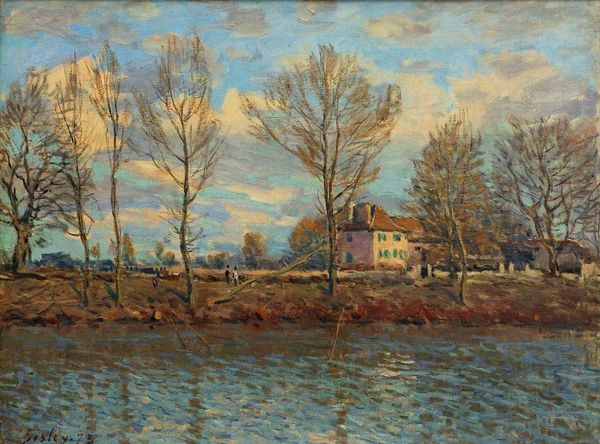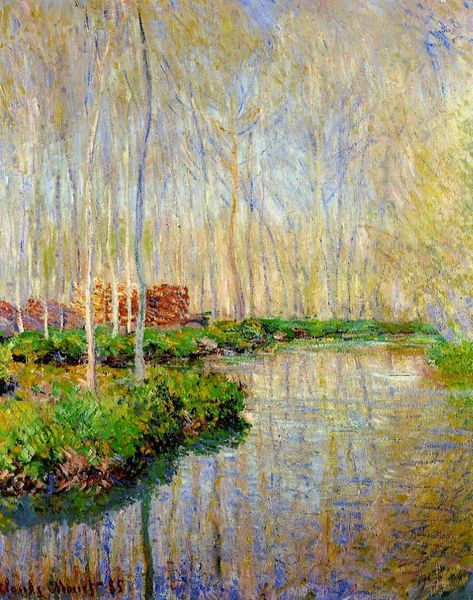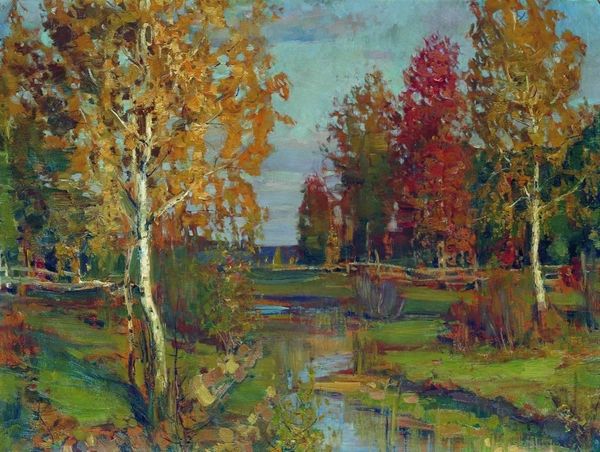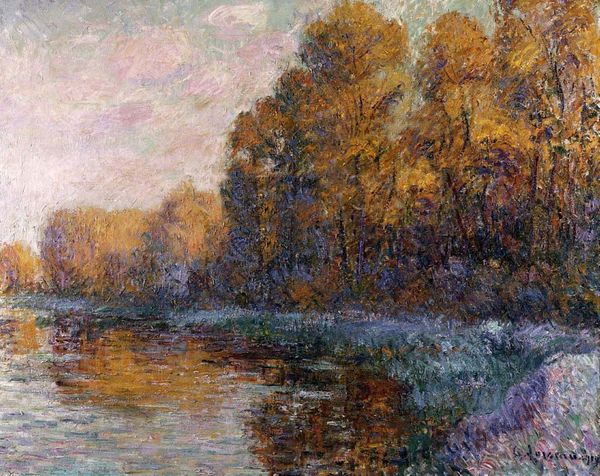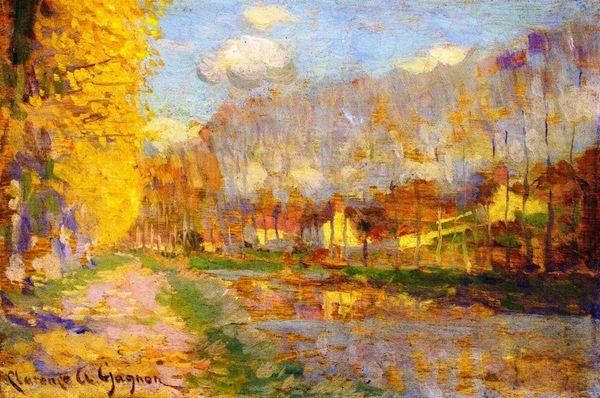
Copyright: Public domain
Curator: Monet painted this around 1873, and it's called "The Pond with Ducks in Autumn." It seems like a fairly typical landscape scene, but even just at first glance, the vibrant colors stand out. Editor: My eye is immediately drawn to the texture – you can practically feel the thickness of the impasto, can't you? It seems so tactile; you just want to reach out and touch the canvas to see how it all builds together into the landscape. Curator: Absolutely, that’s characteristic of Monet’s approach, capturing light and fleeting moments in nature. It resonates, evoking the end of a season where colors transition and change—the orange and red roof set amongst autumnal trees are very striking. The ducks contribute to a sense of pastoral harmony. Editor: Right. Thinking about materiality and production, that textural build-up would have meant applying layers upon layers of paint. I'm also curious about how accessible those tubes of oil paint were to Monet at the time, as that probably affected his color choice and thickness of paint. Did he perhaps formulate them himself? That changes how we value them today, if it's from his own making. Curator: An interesting question! This idea of readily available paints ties to Impressionism's accessibility in general. Rather than deeply complex religious or mythological subjects, a moment like this could be grasped by the ordinary person – seeing a place of calm and rest, yet tinged with coming cold. I see cyclical rebirth in the water motif. Editor: True, but I wonder if accessibility downplays the true innovation in the techniques employed here. Also the presence of the house itself can carry symbolic connotations about society at large. There's the pond, the fence separating it and the property, and then the red building set further back. Do we consider that, when assessing its landscape as a snapshot in nature? Curator: Those sorts of symbols are surely present, yet obscured somewhat by his painterly style and concerns with optics—more of a subjective rendering versus detached commentary, though. In any case, contemplating this, it’s amazing to consider all the visual memory that he could render using simple tools! Editor: Exactly – from raw materials and manual labor, an image is brought into being. I'll never not appreciate the means and processes behind its visual splendor.
Comments
No comments
Be the first to comment and join the conversation on the ultimate creative platform.

